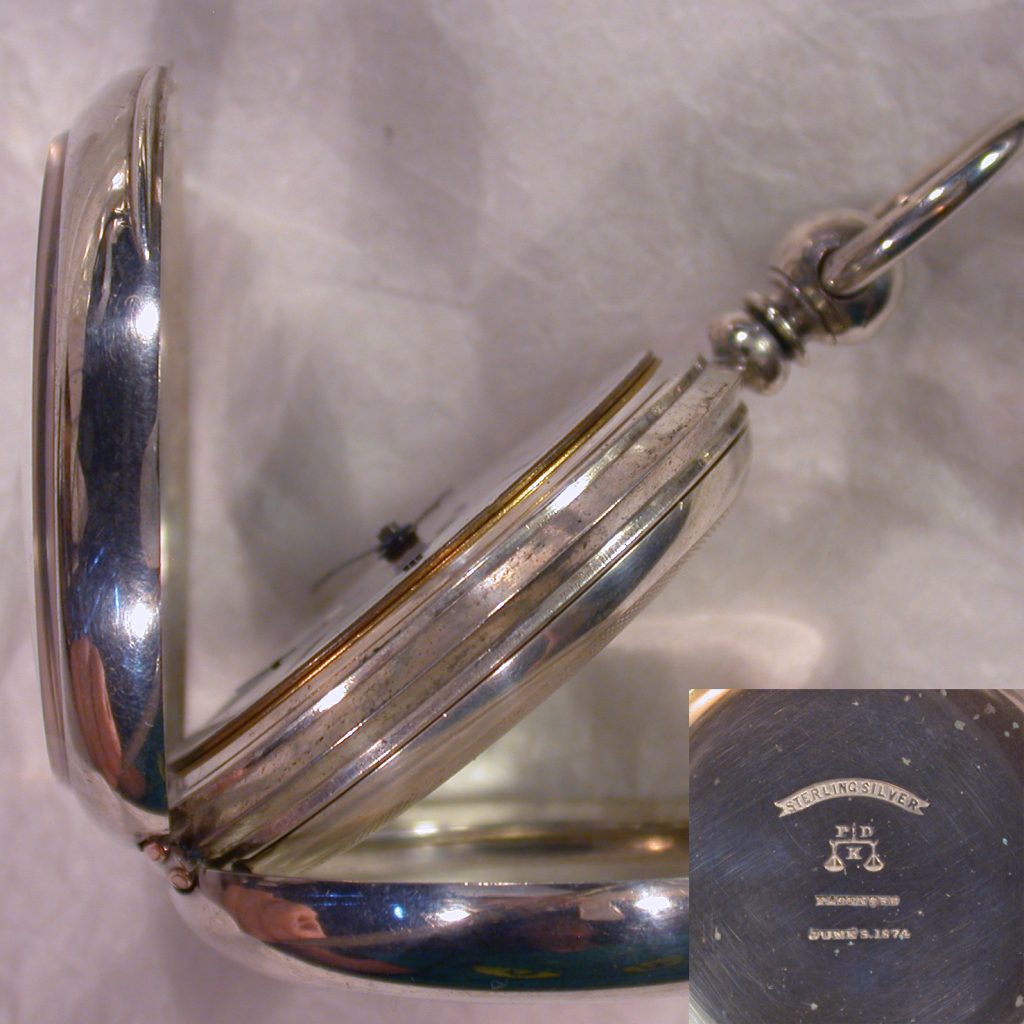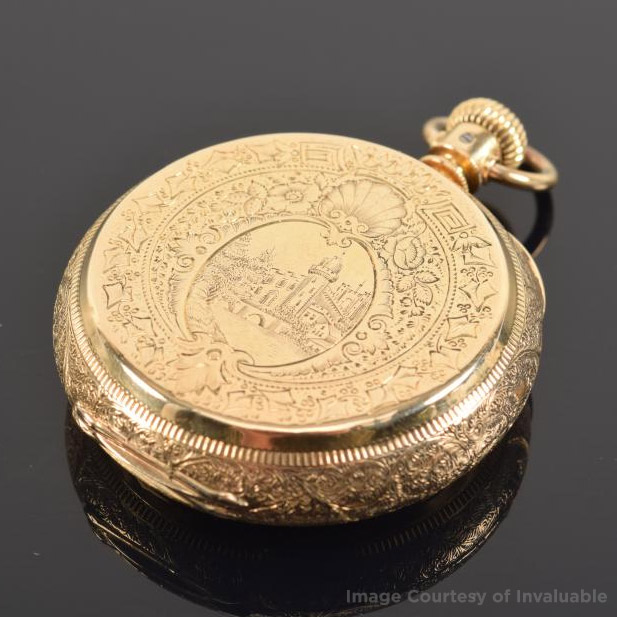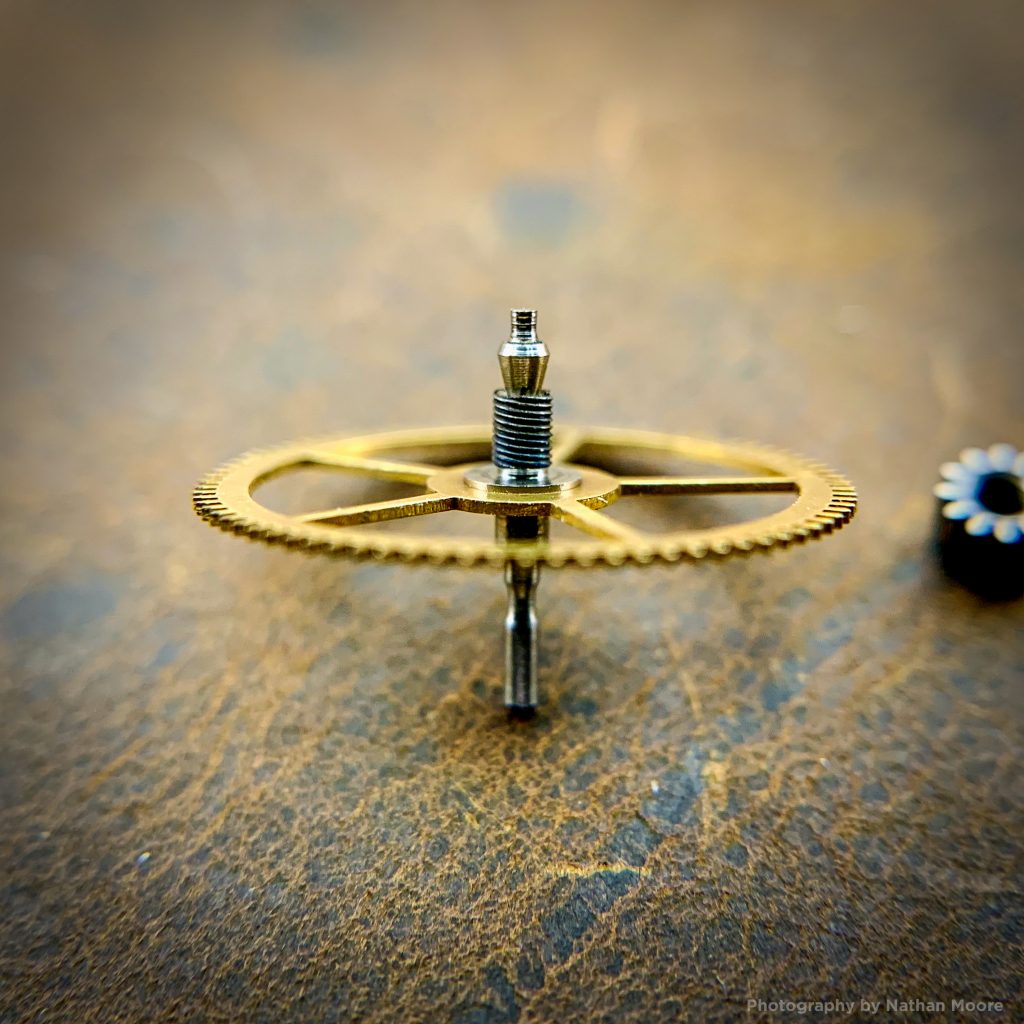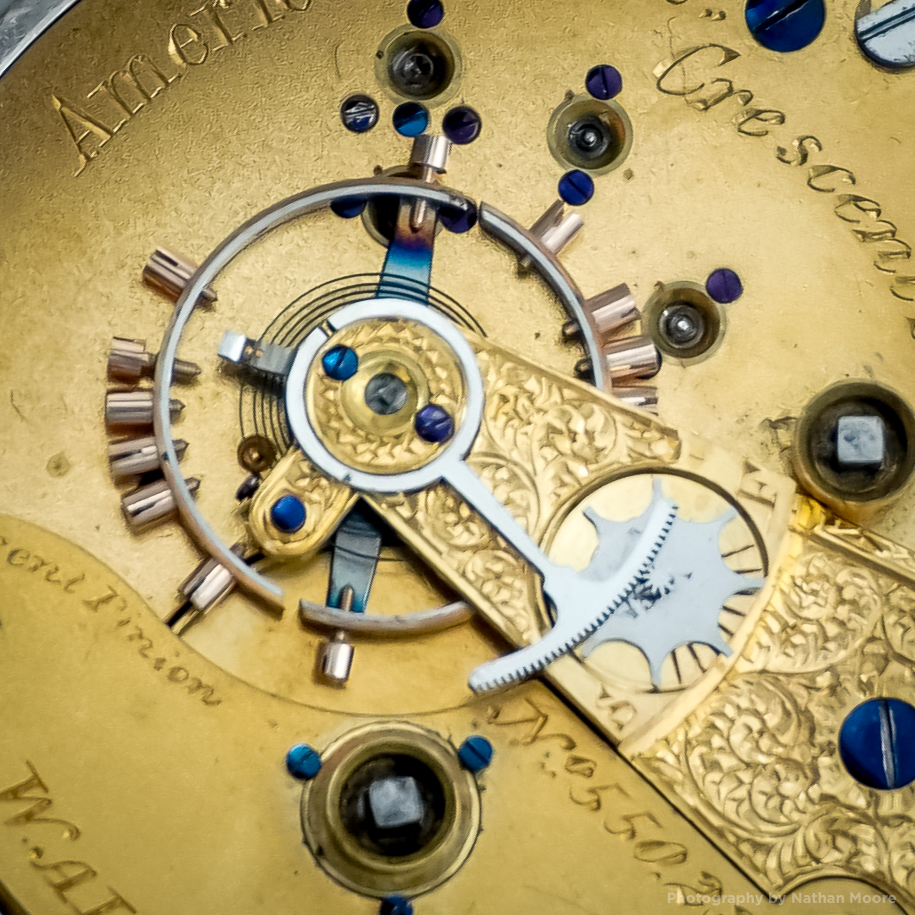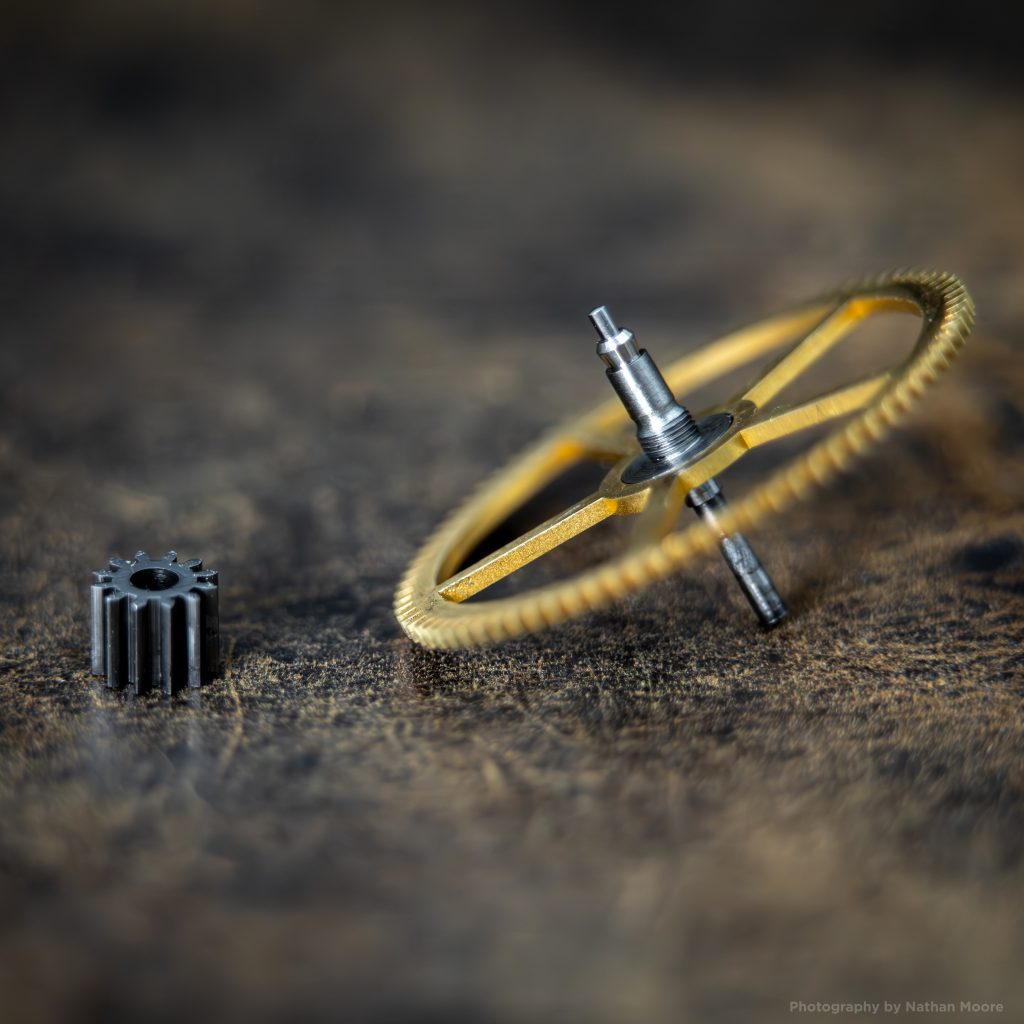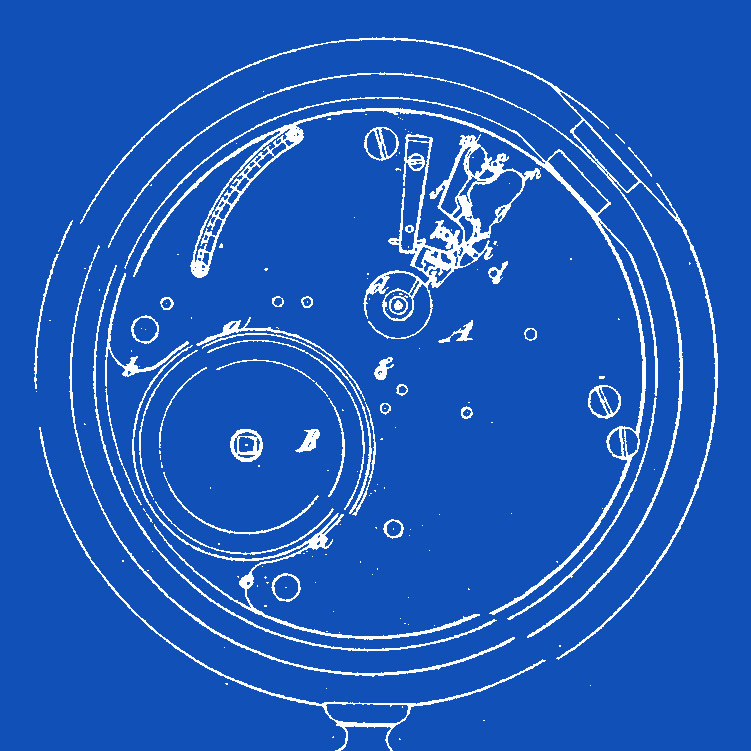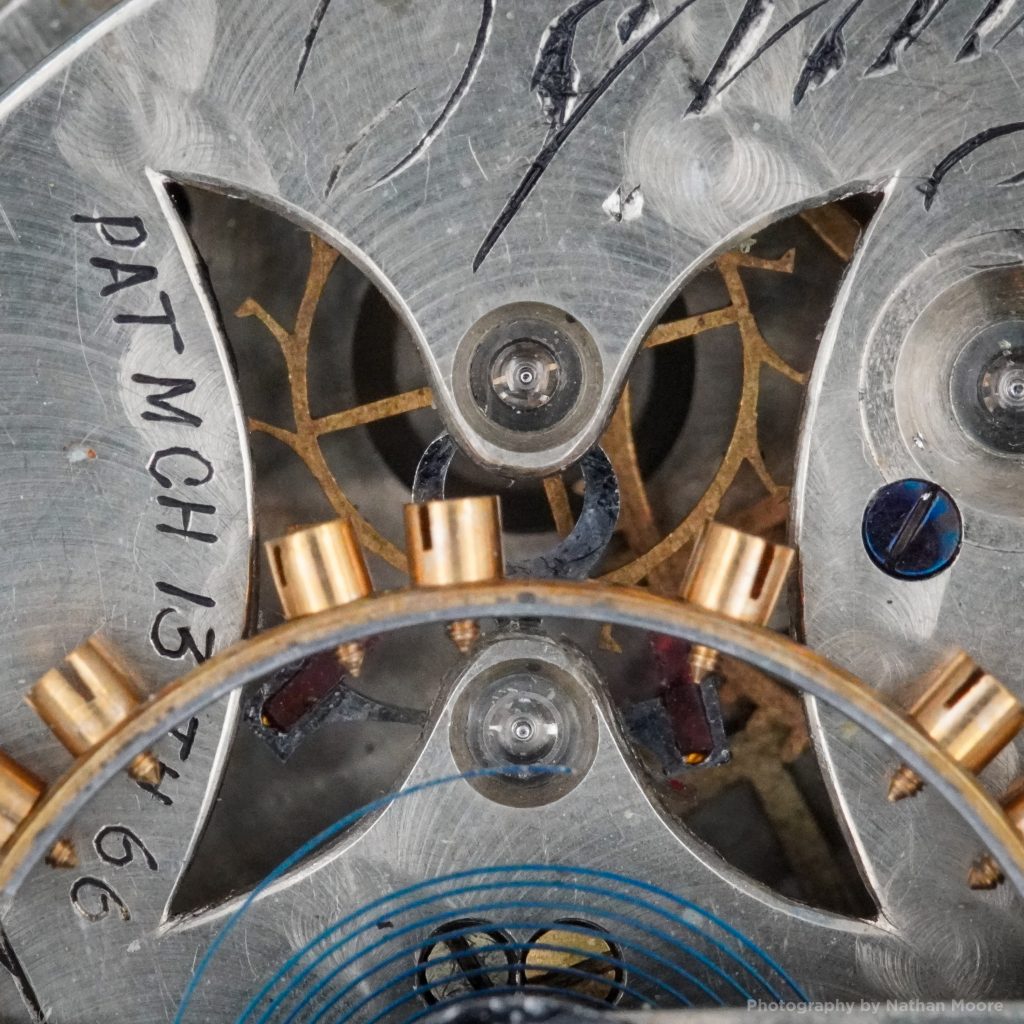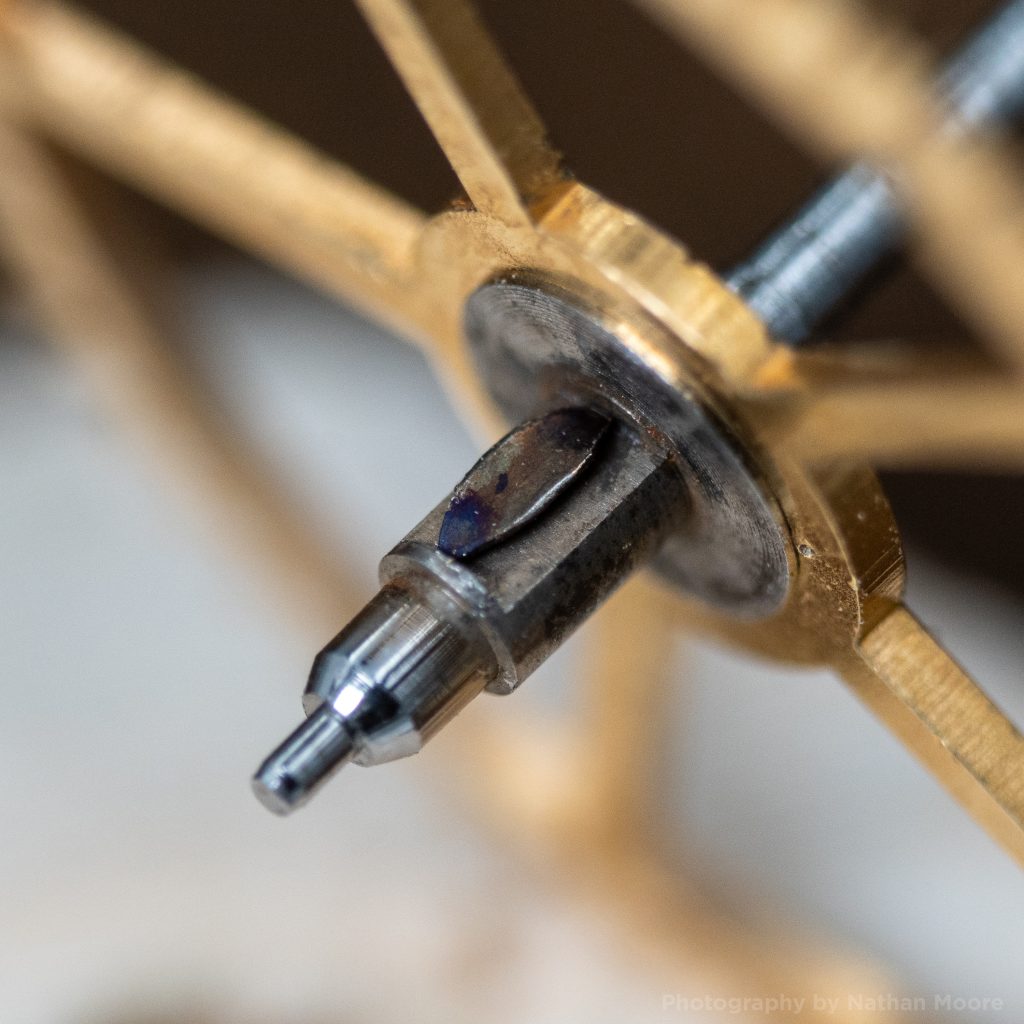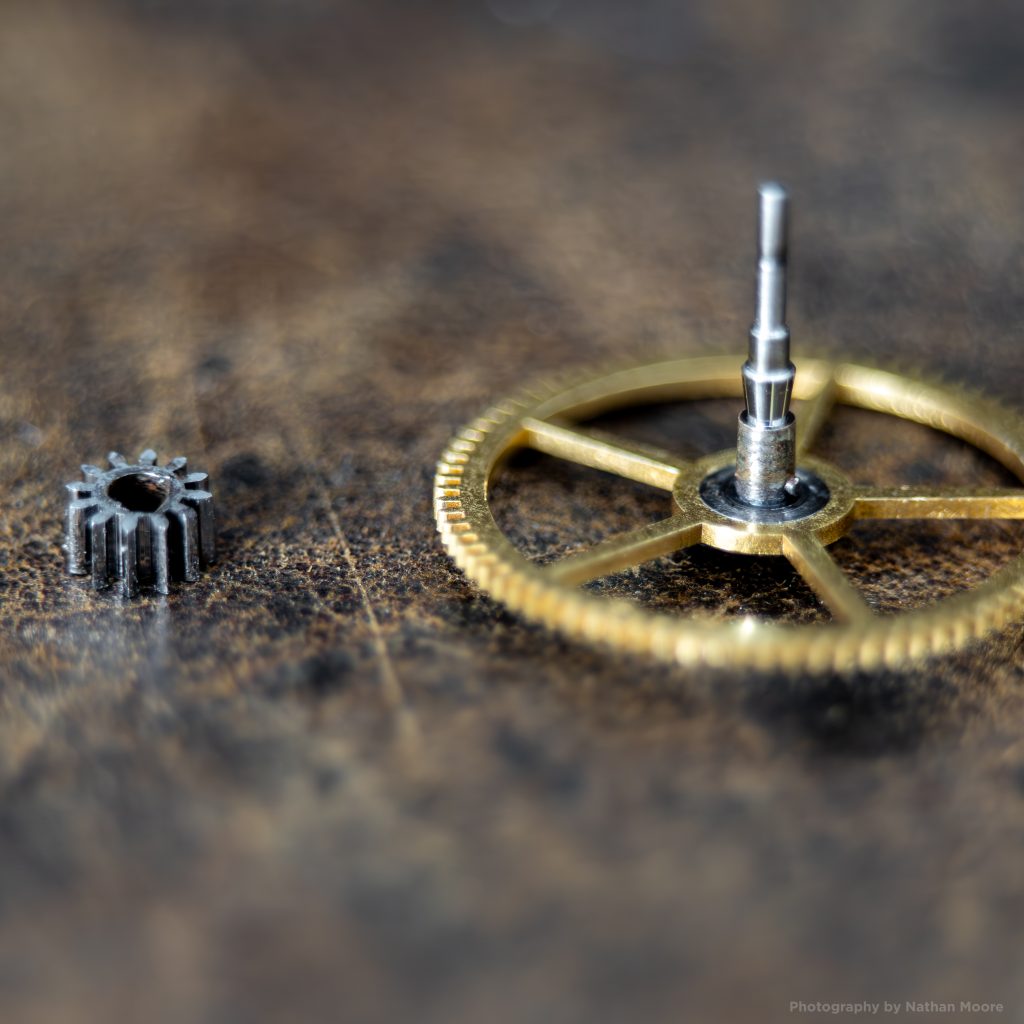Patents & Innovations
Photo showing the exterior of the Fitch Patent Beveled Invisible Centre CaseNotice the seam along the perimeter of the caseImage Courtesy of Invaluable Ezra Charles Fitch was one of the.
Fogg's Patent Safety Pinion When the "Crescent Street" movement first debuted, it included several new features designed to quickly capture the growing railroad market. These features were detailed in advertisements.
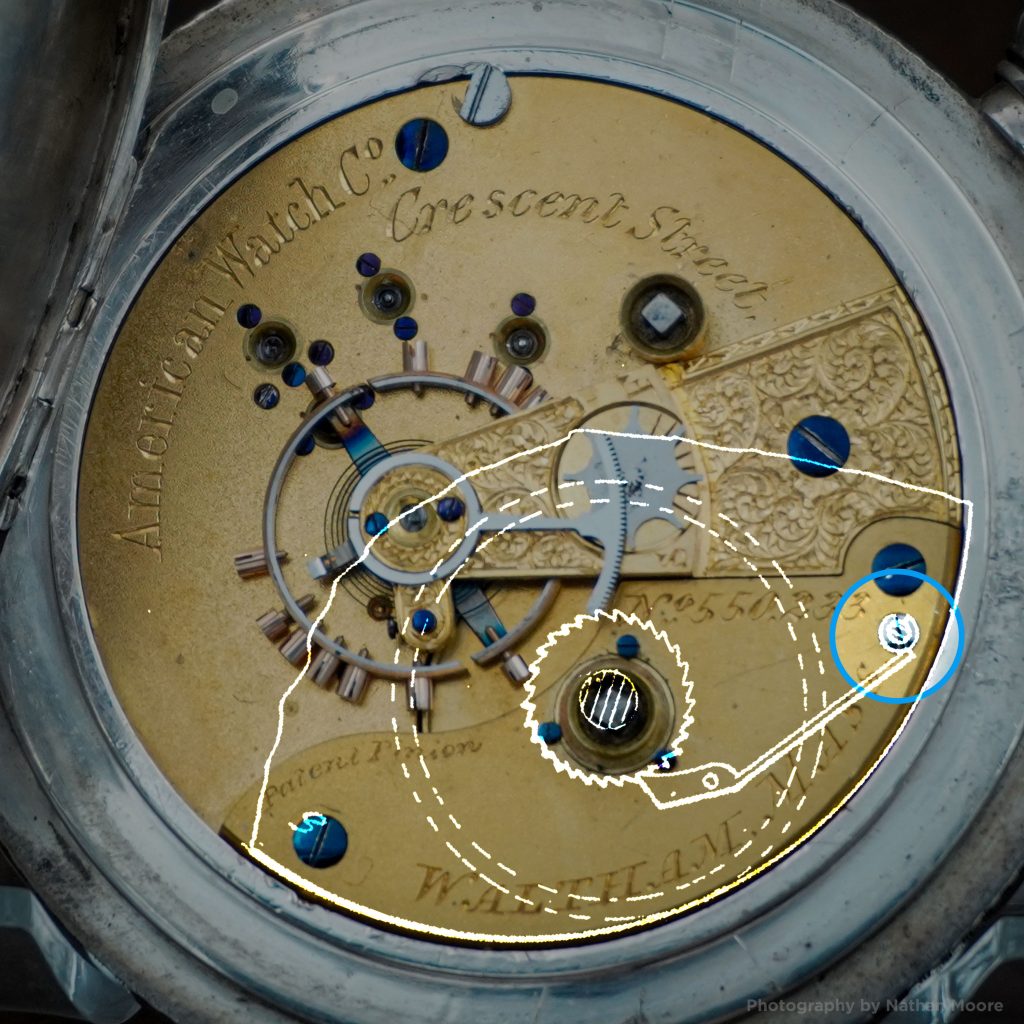
Woerd's Patent Micrometric Regulator Fitted on a Waltham Model 1870 Crescent Street Movement When the "Crescent Street" movement first debuted, it included several new features designed to quickly capture the.
The power that allows a pocket watch to operate is provided by the mainspring. This large spring is coiled tightly inside the mainspring barrel as the watch is wound. Once.
The first model introduced by the United States Watch Company (Marion) featured a beautiful "butterfly cutout," revealing the escapement typically hidden away from view. The top plate design used for.
Different Approach The patented safety pinion designs by Burt, Fogg, and Moseley all operated by means of a center pinion that would disengage from the center staff when the mainspring.

